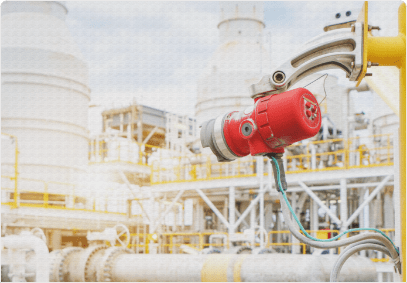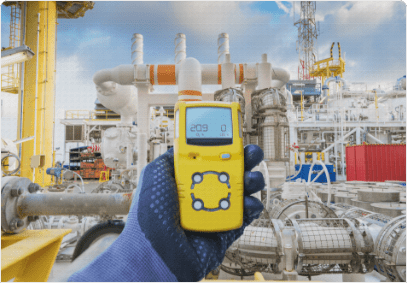Roar Solutions Things To Know Before You Buy
Roar Solutions Things To Know Before You Buy
Blog Article
Getting The Roar Solutions To Work
Table of ContentsNot known Incorrect Statements About Roar Solutions Not known Factual Statements About Roar Solutions The 20-Second Trick For Roar Solutions
In such an atmosphere a fire or surge is possible when 3 standard problems are satisfied. This is often described as the "harmful location" or "combustion" triangle. In order to protect installments from a potential surge an approach of evaluating and categorizing a possibly unsafe area is required. The function of this is to guarantee the right option and setup of equipment to inevitably prevent an explosion and to make sure security of life.
(https://www.bitchute.com/channel/JJyNq2gAk2M7)
No devices should be mounted where the surface temperature of the devices is better than the ignition temperature of the given danger. Below are some typical dirt dangerous and their minimum ignition temperature level. Coal Dirt 380C 225C Polythene 420C (melts) Methyl Cellulose 420C 320C Starch 460C 435C Flour 490C 340C Sugar 490C 460C Grain Dust 510C 300C Phenolic Resin 530C > 450C Aluminium 590C > 450C PVC 700C > 450C Residue 810C 570C The chance of the hazard existing in a focus high enough to trigger an ignition will certainly differ from area to place.
In order to classify this risk a setup is separated right into locations of threat relying on the quantity of time the unsafe exists. These locations are described as Zones. For gases and vapours and dusts and fibers there are 3 areas. Zone 0 Zone 20 A hazardous atmosphere is highly most likely to be present and may be present for lengthy durations of time (> 1000 hours per year) and even continuously Zone 1 Area 21 A dangerous atmosphere is possible however not likely to be existing for long periods of time (> 10 450 C [842 F] A classification of T6 implies the minimal ignition temperature is > 85 C [185 F] Harmful area electrical devices possibly created for use in greater ambient temperatures. This would certainly showed on the ranking plate e.g. EExe II C T3 Ta + 60C( This implies at 60C ambient T3 will not be gone beyond) T1 T1, T2, T3, T4, T5, T6 T2 T2, T3, T4, T5, T6 T3 T3, T4, T5, T6 T4 T4, T5, T6 T5 T5, T6 T6 T6 A T Course score of T1 implies the maximum surface area temperature level created by the instrument at 40 C is 450 C. Assuming the connected T Course and Temperature level rating for the equipment are appropriate for the location, you can always use an instrument with an extra strict Department score than needed for the area. There isn't a clear solution to this concern regrettably. It really does depend upon the kind of tools and what repairs require to be lugged out. Equipment with specific test treatments that can not be done in the field in order to achieve/maintain 3rd event ranking. Need to return to the factory if it is before the equipment's service. Field Repair By Authorised Employee: Challenging testing may not be called for nonetheless particular procedures might need to be complied with in order for the tools to keep its 3rd party rating. Authorised personnel need to be employed to perform the job properly Repair should be a like for like substitute. New element need to be taken into consideration as a straight replacement needing no special screening of the devices after the repair work is total. Each piece of equipment with a harmful rating must be evaluated independently. These are detailed at a high degree listed below, however, for even more comprehensive information, please refer directly to the guidelines.
Excitement About Roar Solutions
The equipment register is an extensive database of equipment documents that consists of a minimum set of areas to identify each item's location, technological criteria, Ex classification, age, and ecological information. This information is critical for monitoring and managing the tools efficiently within unsafe areas. On the other hand, for routine or RBI sampling examinations, the grade will certainly be a combination of Thorough and Close examinations. The ratio of Thorough to Close evaluations will certainly be determined by the Tools Danger, which is assessed based on ignition risk (the possibility of a source of ignition versus the probability of a flammable environment )and the dangerous area classification
( Area 0, 1, or 2). This variant will certainly also influence the resourcing requirements for work preparation. As soon as Whole lots are specified, you can develop sampling plans based on the sample size of each Lot, which describes the variety of random tools things to be examined. To determine the called for sample size, 2 elements need to be assessed: the dimension of the Whole lot and the classification of evaluation, which shows the degree of initiative that must be applied( lowered, regular, or boosted )to the examination of the Whole lot. By integrating the group of evaluation with the Whole lot dimension, you can then develop the ideal rejection requirements for an example, implying the allowed number of defective items located within that example. For more details on this procedure, please refer to the Energy Institute Guidelines. The IEC 60079 typical recommends that the maximum interval between inspections ought to not exceed 3 years. EEHA evaluations will certainly also be carried out outside of RBI campaigns as part of scheduled maintenance and equipment overhauls or repairs. These examinations can be attributed towards the RBI example dimensions within the impacted Whole lots. EEHA inspections are carried out to recognize faults in electrical devices. A weighted racking up system is important, as a single tool might have numerous Click Here faults, each with varying levels of ignition risk. If the mixed score of both inspections is much less than two times the fault score, the Whole lot is regarded acceptable. If the Whole lot is still taken into consideration undesirable, it should undergo a full inspection or reason, which may set off more stringent evaluation protocols. Accepted Lot: The root causes of any type of mistakes are determined. If a typical failure setting is located, extra devices might call for evaluation and repair work. Mistakes are classified by seriousness( Safety and security, Stability, Housekeeping ), guaranteeing that urgent concerns are assessed and resolved without delay to mitigate any kind of influence on safety or procedures. The EEHA database ought to track and record the lifecycle of faults together with the rehabilitative activities taken. Executing a durable Risk-Based Assessment( RBI )strategy is essential for ensuring compliance and safety and security in taking care of Electric Devices in Hazardous Areas( EEHA) (hazardous area electrical course). Automated Mistake Scoring and Lifecycle Management: Effortlessly take care of mistakes and track their lifecycle to enhance examination precision. The introduction of this assistance for risk-based inspection further reinforces Inspectivity's placement as a best-in-class remedy for regulatory conformity, as well as for any asset-centric inspection use case. If you have an interest in finding out extra, we invite you to ask for a demonstration and discover just how our service can change your EEHA monitoring procedures.
Not known Factual Statements About Roar Solutions

In terms of eruptive danger, an unsafe location is an environment in which an explosive environment is existing (or might be expected to be existing) in quantities that call for unique precautions for the building, setup and use equipment. eeha certificate. In this short article we check out the obstacles dealt with in the workplace, the risk control steps, and the needed competencies to work safely
It issues of contemporary life that we produce, store or deal with a variety of gases or fluids that are deemed flammable, and a variety of dirts that are considered flammable. These compounds can, in specific problems, create explosive environments and these can have major and awful effects. Most of us recognize with the fire triangle get rid of any type of one of the three elements and the fire can not occur, yet what does this mean in the context of unsafe areas? When breaking this down into its simplest terms it is basically: a combination of a specific amount of release or leakage of a particular substance or material, combining with ambient oxygen, and the presence of a source of ignition.
In many instances, we can do little concerning the degrees of oxygen in the air, yet we can have considerable influence on sources of ignition, as an example electrical devices. Unsafe locations are recorded on the dangerous area category illustration and are determined on-site by the triangular "EX LOVER" indicator. Right here, among other essential details, zones are divided into three kinds depending on the risk, the probability and period that an eruptive environment will exist; Zone 0 or 20 is considered the most hazardous and Zone 2 or 22 is considered the least.
Report this page